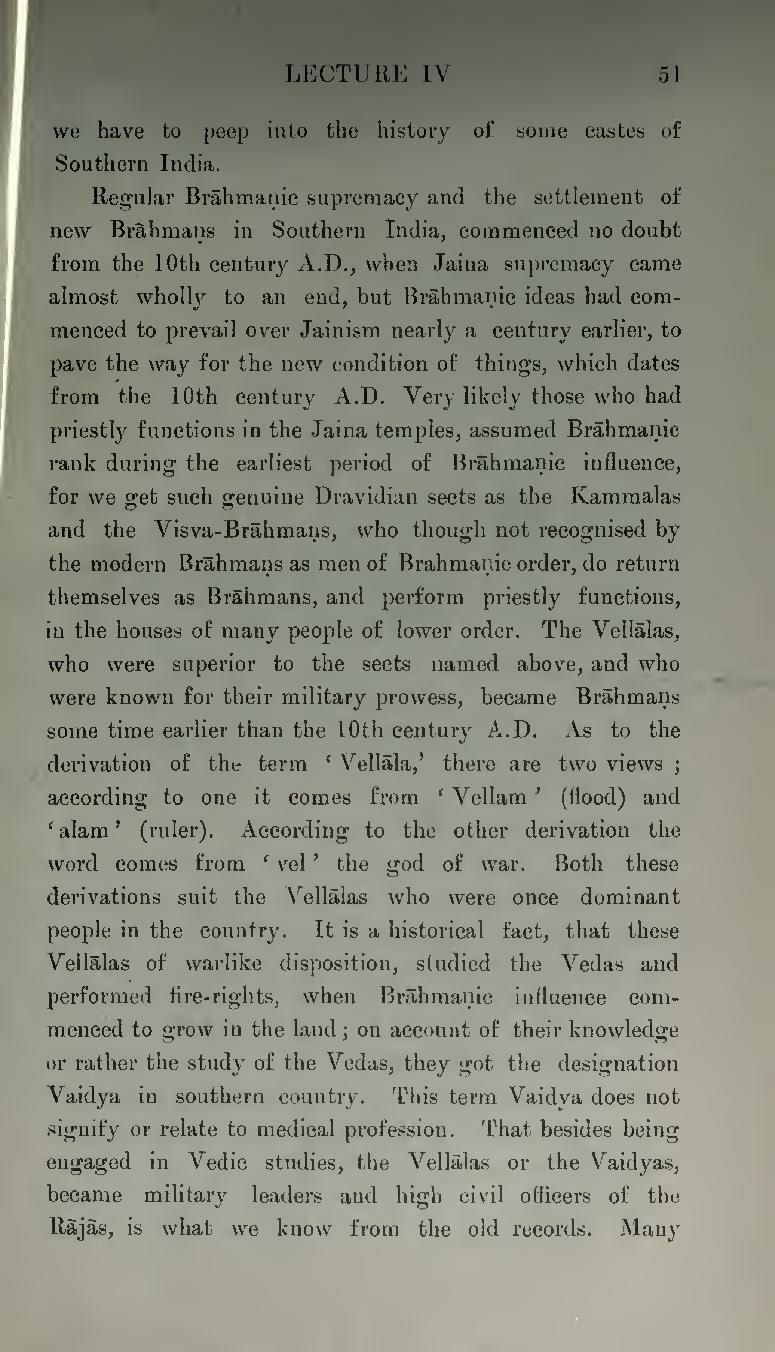we have to peep into the history of some castes of Southern India.
Regular Brāhmaṇic supremacy and the settlement of new Brāhmaṇs in Southern India, commenced no doubt from the 10th century A.D., when Jaina supremacy came almost wholly to an end, but Brāhmaṇic ideas had commenced to prevail over Jainism nearly a century earlier, to pave the way for the new condition of things, which dates from the 10th century A.D. Very likely those who had priestly functions in the Jaina temples, assumed Brāhmaṇic rank during the earliest period of Brāhmaṇic influence, for we get such genuine Dravidian sects as the Kammalas and the Visva-Brāhmaṇs, who though not recognised by the modern Brāhmaṇs as men of Brāhmaṇic order, do return themselves as Brāhmaṇs, and perform priestly functions, in the houses of many people of lower order. The Vellālas, who were superior to the sects named above, and who were known for their military prowess, became Brāhmaṇs some time earlier than the 10th century A.D. As to the derivation of the term 'Vellāla,' there are two views; according to one it comes from 'Vellam' (flood) and 'alam' (ruler). According to the other derivation the word comes from 'vel' the god of war. Both these derivations suit the Vellālas who were once dominant people in the country. It is a historical fact, that these Vellālas of warlike disposition, studied the Vedas and performed fire-rights, when Brāhmaṇic influence commenced to grow in the land; on account of their knowledge or rather the study of the Vedas, they got the designation Vaidya in southern country. This term Vaidya does not signify or relate to medical profession. That besides being engaged in Vedic studies, the Vellālas or the Vaidyas, became military leaders and high civil officers of the Rājās, is what we know from the old records. Many
